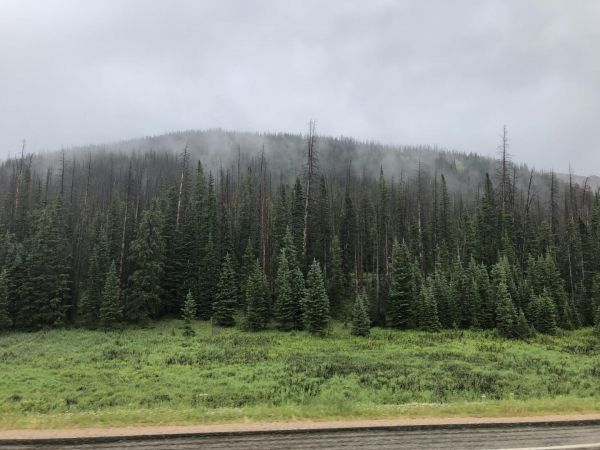When southern Rocky Mountain forests are viewed from a distance these days, it may not look like much is left. Large swaths of dead, standing Engelmann spruce trees tell the tale of a severe regional spruce beetle epidemic in its waning stages. But among those dead trees, researchers have found good news. Zoom-in to the ground cover of these forests and there is life, even more abundant because of this disturbance.
New research led by Colorado State University and published online in Scientific Reports suggests that spruce beetle outbreaks may help create habitat for pollinator communities in wilderness settings. The research team found significant increases in floral abundance and wild bee diversity in outbreak-affected forests, compared to similar, undisturbed forest. Lead author Seth Davis said it may seem counterintuitive that landscape-level damage by one type of insect could still benefit another.
“Disturbances from bark beetles are typically regarded as undesirable for ecosystem function and human use,” said Davis, an assistant professor in the Forest and Rangeland Stewardship department. “But there is conservation value in post-outbreak forests; they appear to be the areas supporting more robust bee populations.”
Read more at: Colorado State University
A high-elevation spruce beetle-affected forest. (Photo Credit: Seth Davis/Colorado State University)


